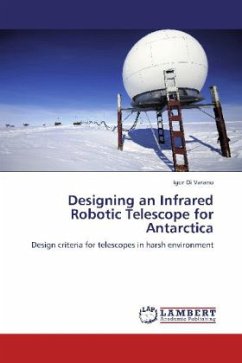Since decades the Antarctic Plateau is well known to be one of the best astronomical sites on Earth for its remarkable transparency in MIR windows and low scintillation noise, which make telescope performances equivalent to those of a 3 times larger aperture instrument. This work shows the adopted design steps which led from the conceptual phase to the final construction, in order to fulfill the observational requirements. Details about the static and dynamic analysis of the supporting structure and its subassemblies are provided, which have been determined via FEM simulations, once the appropriate active loads have been defined. CFD analysis results for the electronic components are also illustrated, to estimate thermal response in an unsteady state, with boundary conditions based on data collected in the previous campaigns. Displacement errors retrieved from simulations represent systematic mechanical errors that, together with the astrometric ones, affect each observation and that must be integrated in the telescope control software.







